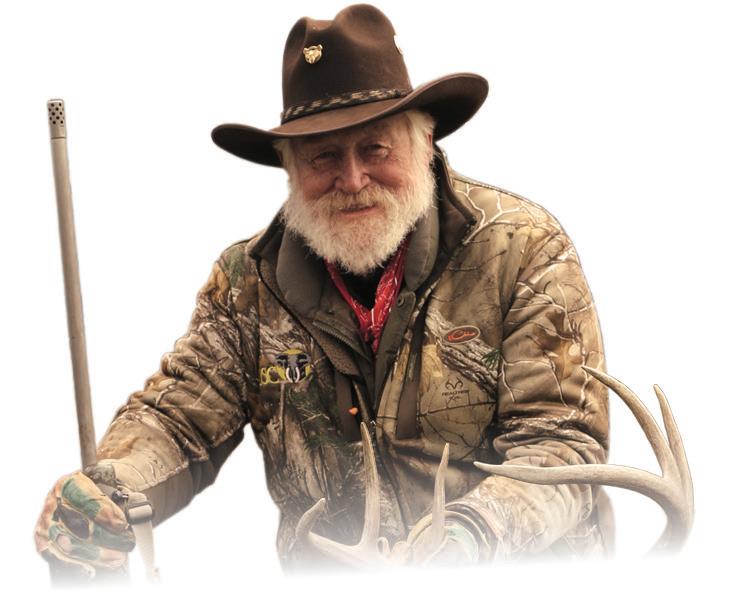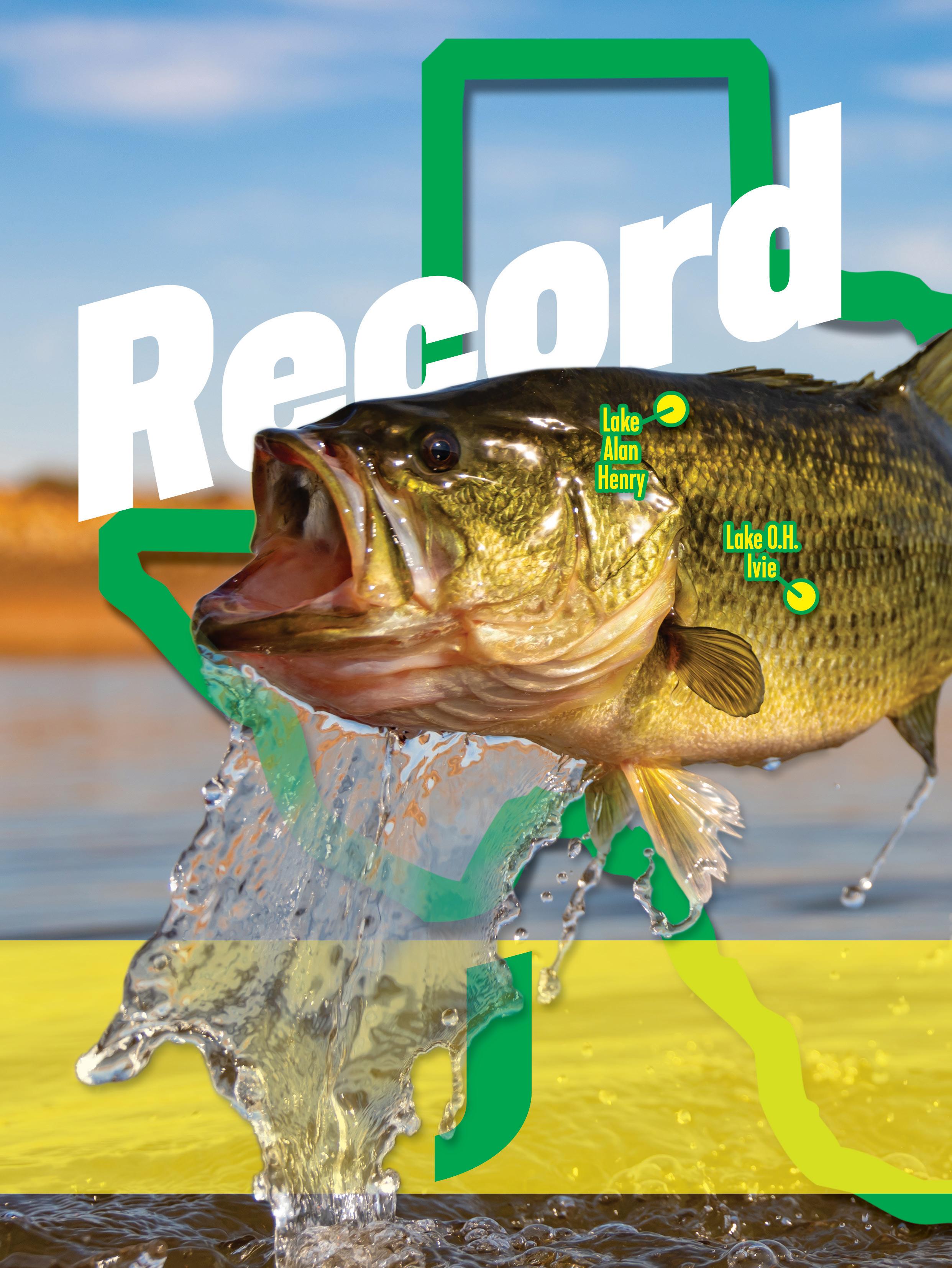
7 minute read
Texas Whitetails



by LARRY WEISHUHN :: TF&G Whitetail Deer Editor
Keeping the Hunt Going
KNOW YOU’VE STILL GOT A hunt or two le on property under the TPWD’s Managed Land Deer Permit program,” stated my brother. He continued, “Some of the bucks I saw early before the season on my property just started showing up again. Don’t have a MLDP, but I have the Muzzleloader Season to look forward to.”
“Lots of good deer hunting still to be had in January and even into February with managed land permits.” I responded. Indeed, there is some great whitetail hunting still to be had before the Texas whitetail deer seasons are over.
Late winter is a great time to take a big mature buck that, during the earlier part of the hunting season, made himself scarce. ere are basically two reasons older, mature bucks move—hunger and sex.
By the time we get into January most of the whitetail hunting is over. But in Texas, we have greatly varied habitat and terrain. is results in widely di erent times when the breeding seasons across our state, occur. I have seen bucks seriously chasing does as early as the rst week of September along the central part of the Gulf Coast—and as late as mid-January in the Brush Country. e reason the rut occurs when it does, where it does, is so that about 230 days later, fawns are born at the most nutritionally opportune times in that immediate area.
With changes in land practices, and yearround supplemental feeding, deer in those areas where the nutritional levels are high do not change with the season. ere is no longer a real reason for fawns to be born during a speci c window.
It’s interesting that female whitetail fawns, if they are on a really good nutritional level, (meaning about eighteen percent protein, excellent energy and optimum vitamins and minerals) can and o en do breed at six to eight months of age. It is not uncommon for upwards of sixty to eighty percent of doe fawns born in late spring and early summer, to begin breeding in January or even early February.
Young doe fawns that experience their rst estrus are highly sought a er by bucks. us, a good hunting strategy in January amounts to hunting prime feeding areas where deer concentrate and congregate. Bucks come to these feeding areas to forage, but also check on the estrus status of young does.
A couple of years ago, I had the opportunity to hunt a well-managed property in central Texas near Llano. For the most part the peak of the whitetail rut in the area had taken place in mid-November.
My schedule was such I could not get to the ranch until a er the annual DSC Convention (www.biggame.org) in early January. ankfully, the owner had invited me to hunt in mid-January.
A cold north wind was blowing when I arrived at the ranch. I knew where there was a food plot that had been planted in late fall, and had only recently started producing forage. I felt assured young and old does, as well as some bucks, would be there. First a ernoon, hidden behind a “comfortable” boulder, I watched a mature typical 12-point stride into the eld. He made a run at a couple of young of the year does. It was a fatal mistake on his behalf. Food and sex!

“There is lots of good deer hunting still to be had in January.”
Email Larry Weishuhn at ContactUs@fi shgame.com
ANUARY 24, 2022 MARKS THE 30TH anniversary of Texas’s state record bass. Many TF&G readers weren’t even born when the 18.18pound largemouth gobbled up the live shiner Barry St. Clair of Athens was dabbling for crappie near the Lake Fork dam on that fateful winter day in 1992, but that’s beside the point.
The focus here is it is high time that Texas’s most coveted freshwater fishing record find a new owner.

Nothing against St. Clair. Records are made to be broken, and this one has been gathering dust way too long.
In random order, here are my picks for the lakes most likely to kick out Texas’ next state record:
O.H. IVIE O.H. Ivie had the hot hand for Legacy Lunkers last year with 12 entries, including six 13 pounders, four 14 pounders, a 15 pounder and a 16.40 pounder. The 16 pounder ranks as the No. 16 heaviest Texas bass of all-time and the biggest fish reported statewide since 1999. One fat crappie or channel cat in its belly and that fish would have been knocking at the state record’s door.
Ivie’s bass fishery has a strong Floridastrain influence. The fish are currently enjoying some great habitat and abundant forage, which are three key ingredients to creating and sustaining a trophy fishery. It’s spooky to think what might happen there if the lake catches some water and stays in good shape over the next few years.

LAKE FORK
It isn’t the big bass factory it once was, but only a fool would rule out “Mother Fork” as a state record contender.
The lake maintains a heavy Florida-strain influence, thanks to heavy annual stockings. The fish continue to thrive despite aging habitat and heavy fishing pressure, due in part to a restrictive 16- to 24-inch slot limit.
The lake has produced seven of the state’s Top 10 bass, 30 of the Top 50 and 264 Toyota Legacy ShareLunkers since 1986. Its most recent Top 50 entry was a 15.48 pounder in March 2018. Fork produced a pair Legacy ShareLunkers in 2021, including a 15.27 pounder last March that was subsequently released back into the lake.
NACONICHE
First opened to fishing in September 2012, 692-acre Naconiche has been managed for trophy bass from the get-go with heavy stockings of Florida-strain largemouths. This includes hundreds of hatchery brood fish retirees (some close to seven pounds) and thousands of Toyota ShareLunker offspring. The lake has a 16-inch maximum length limit to protect big ones, a bounty of forage to keep them plump and a jungle of great habitat where they can thrive.
Naconiche produced a lake record 14.16 pounder in July 2016. Surprisingly, it has yielded only one Legacy Lunker, a 13.06 pounder in 2017. Fisheries biologists are predicting a big bass explosion in the near future as more year classes come of age and reach trophy size. With the genetics that are finning around out there, look out.
ALAN HENRY
Too much big bass history here to count Alan Henry out. The 2,900-acre West Texas gem is tied with Sam Rayburn as the state’s third leading producer of Legacy Lunkers (29) behind O.H. Ivie (41) and Lake Fork (264). It was the state’s hottest lake for whoppers in 2005-06 with 18 Legacy Lunkers, including the current lake record of 15 pounds. ’Henry’s most recent bruisers came in 2020 when it produced a pair of Legacy class fish for the same angler less than a month apart, the heaviest weighing 14.36 pounds. SAM RAYBURN
Well-known as one of the country’s top tournament lakes, Sam Rayburn is a massive reservoir with a strong Florida bass influence, abundant forage base and historically great habitat. With more than 114,000 surface acres to roam, one can’t help but ponder thoughts of giants finning around out there that have never seen a lure.
Plenty of fat girls have been reeled in, including a May 1997 lake record of 16.80 pounds and 29 Legacy Lunkers ranging from 13 pounds to 14.32. Additionally, there was a 14.94 pounder that died in February 2020, soon after being weighed on certified scales.
Several tournament anglers have lived big bass nirvana on ‘Rayburn in recent times, including a trio of single day tournament catches topping the 40-pound mark on five fish. The most remarkable belongs to Danny Iles and Brian Shook, who weighed in 49.31 during a Texas Team Trail event in February 2020. It may be the heaviest limit of bass ever documented in an organized team tournament on U.S. public waters.
«









